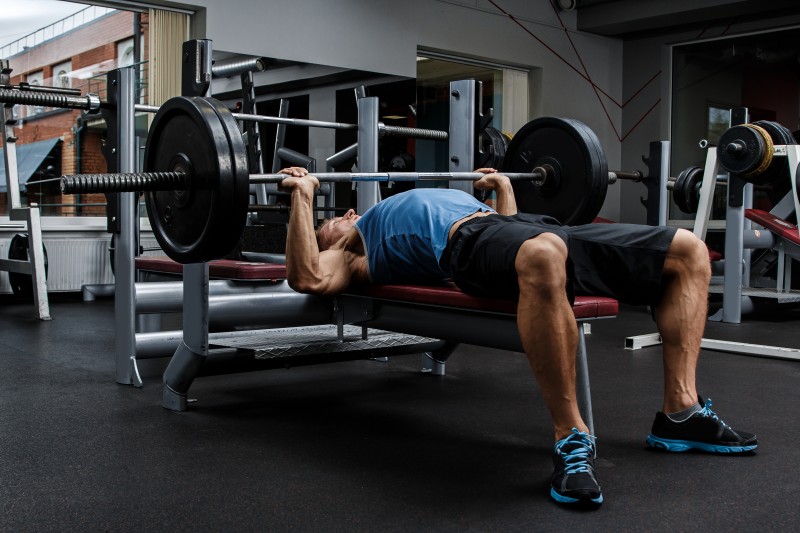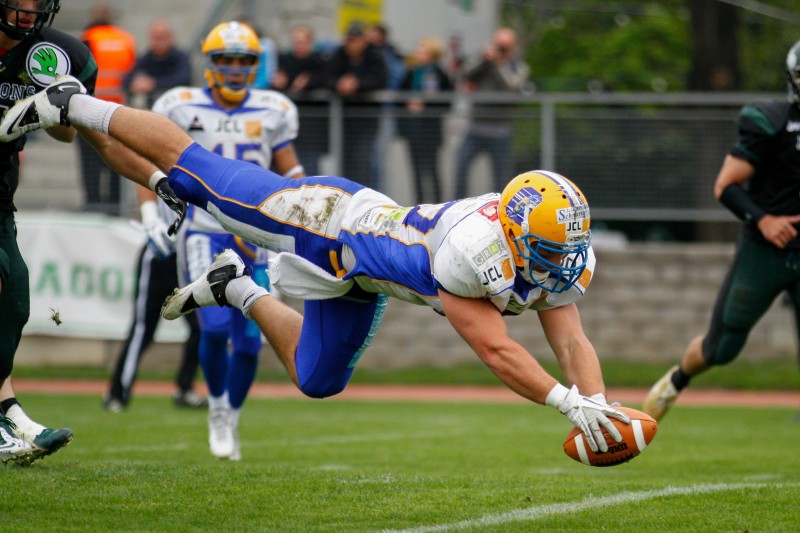
I have to watch out or I am going to be known as Dr. 225 at some point.
This test always fascinates me. As I have mentioned previously, the 225 Test is the upper body strength test that is used by the NFL. A load of 225 pounds was selected, not from rigorous scientific testing as some believe but as a compromise. While some wanted to do bodyweight, a set percentage of body weight, or a set load by position, the waters got too muddied. They felt that anyone who was going to play in the NFL should be able to bench press 225 pounds so they would just perform repetitions to failure at that to test strength.
While that is really a misnomer, as pointed out in this previous elitefts article and this journal article we did, it is a fair statement to say that someone who bench presses 500 pounds will be able to perform more repetitions than someone who bench presses 300 pounds. So, in those terms, it is a strength test. However, does it even matter? Benches are not on a football field. No one lies on their back and presses, as many people like to point out.
In our paper, “Comparison of Estimated 1RM and 225lb bench press performance between starters and nonstarters among a NCAA Division 1 college football team,” we examined 31 football players on the test (and we also collected some velocity data, so hold on to your hats for future publications from this data set). When we looked at the data, Jay Dawes said, “Let’s look and see if this made any difference in playing time. I mean, it’s not like they lie on their backs and press in the game, but it may be worth a look.”
The 31 players were subdivided into big, mid, and skill positions, as these position groups each have unique physiological and biomechanical demands. The sample size isn’t large enough for individual positions to be denoted (i.e., tight end, inside linebacker, tackle, guard, etc.). Those players were further subdivided into starters and non-starters.

ayphoto © 123rf.com
We ran a simple statistic of a point bi-serial correlation to see if there were relationships between the 225 and playing status. For the big positions, we found a moderate to strong correlation between playing status and the NFL-225 Test (r= 0.685). This relationship did not exist for the other positions in our study.
In various sports, it has been found that starters are typically larger, stronger, faster, more powerful, and change direction better than non-starters. For the 225 Test, it has been previously found that there was a small but non-significant relationship to the NFL-225 Test and playing time.
In one respect, it makes sense that, if examining an entire team, there would be a small non-significant relationship. All positions have to use some upper body strength to some extent — to catch and redirect the force of their opponent to block, divert blocks, tackle, and evade tackles. For most positions, this is a very small proportion of the game.
However, the main job of the big positions is to create space and control the line of scrimmage. In order to fight for the line of scrimmage, the upper body has to be utilized in every play. The bigger positions are typically moving at slower velocities. There is no time to increase momentum or inertia as the contact and battle happen within inches of the initiation of the play. At the slower velocities that these individuals are moving, strength will most likely have a greater impact than other abilities, such as speed or power. This may be a major reason why upper body strength itself has an impact on playing abilities for this positional category.
RELATED: Game Day Lifting (with Sample Training Session)
For the mid and skill positions, when the upper body is utilized to perform a movement to gain an advantage, timing and speed of movement are utilized to a greater extent, as the individual is moving at faster velocities prior to colliding. The upper body movements end up being a punch rather than a push. This would indicate a necessity to the velocity end of a force-velocity spectrum as opposed to the force end.
Without a velocity component to the testing battery and analysis, it is impossible to know the relationship of the punching or pressing velocity to playtime. It should be noted that the velocity end of the spectrum would best be tested with unloaded or extremely light conditions (such as a broomstick or only a barbell), so the testing of barbell velocity during the 225 Test would most likely render no further information for this group as they are not moving an appropriate load to test velocity.
This study indicates that it may not be an efficacious method to have all members of the football team perform the same tests. If the test is not related to playing ability, why then are we testing it? Are we testing it to see how they may fare in a positional change? That would be an intelligent use of time. Are we testing it just because that’s what we have always done? Maybe it’s time to stop and think: What are we doing?
When I think about mass-testing, I think the only kinds of mass-testing that should be done are tests that have efficacy for every position. I think, and this is just my opinion, that a 20-yard sprint with a 10-split, a change of direction test (personally, I like the 505 right now, which allows you to see which direction to they move better, to the right or left), and a countermovement jump performed on force plates gives a pretty robust means of testing. If strength is desired for the population (and I think it’s a good idea to do for most), then an isometric mid-thigh pull or an isometric squat can be thrown in readily.

Herbert Kratky © 123rf.com
This gives an idea of starting speed, acceleration ability, change of direction ability, power, and strength. All of these have an impact at a base level to sport. Beyond that, the testing should be reflective of what matters for the sport.
I bring all of this up because it appears that it is pointless to test the NFL-225 for the skill and mid positions based on these data. HOWEVER, if there is a middle position player that they are debating about moving to the big positions, it would be efficacious to test them on the NFL-225 to see if they have the requisite upper body strength and power to succeed at the position.
As we have found from our data, the NFL-225 Test had a slightly better relationship to playing time than a bench press 1RM (NFL 225 r=0.685 and 1RM r=0.660). Why did the NFL-225 Test have a better relationship than the 1RM when they’re using the 225 to be a proxy for 1RM? It could well be because of the energy system specificity. Since a play in football lasts six seconds on average for this team, it would seem that it is an example of anaerobic and possibly alactic power. It would seem that the 1RM should show a better relationship, then.
READ MORE: Neck Training Guidelines to Reduce Incidences and Severity of Concussions
However, football is usually not determined by going out and having a single play and receiving a full rest. There are usually consecutive plays making up a series with recovery times of up to 35 seconds often experienced. By not receiving full recovery between plays, the creatine phosphate levels within the muscle cell would deplete. This would shift the energy system from phosphocreatine to fast glycolysis. This changes the energy substrate, which changes (decreases) the levels of power and force that can be produced.
As the starters will be required to play for longer time durations (due to a greater number of plays in a row and plays total in the game), the ability to go into the next energy system and still produce force and power may be a major asset for the performance of play at the big positions.
We can’t be sure of this, but it is a possibility as to why the relationship was stronger. A lot more research will need to be done in order to be able to know for sure.
What would happen to their playing ability if you attempt to increase the 225-pound bench press for the skill positions? At best, not much. If there isn’t a relationship between a test and playing time or the change in a test and playing time, is it important to emphasize? Most likely not. At worst, if you increase the muscle mass of a player in an area where it’s not needed, then it may slow them down, throw them off balance, and make them worse at their job. Indiscriminate hypertrophy isn’t a good idea when skill is involved.
If you threw a 20-pound weight vest on and went and did something, it would be harder, right? We seem to have a thought that everyone needs to be bigger, stronger, and faster. While that’s not a bad overarching thought process, we need to realize that every decision needs to have context. What is good for one may not be good for another. This is why programming based on individual needs typically provides better results than programming based on everyone.
So what are the key takeaways from this paper? If you’ve got big positions, they’d best have a good level of upper body strength and strength-endurance. If you’ve got other positions, it isn’t that important. As long as they’re strong enough to not get hurt, then they’re fine.
I hope that this article makes you stop and think about what you’re testing, and why. If you’ve got years of data, get with someone who can do statistics and work with them and find out what mattered for your program. Look at transfer indexes, look at how tests and changes in tests related to playing time. Did relationships change at different points in the career for the specific position or general position groups?
Every set of conditions is unique. There are tangible and intangible aspects that drive the results of various programs. Differences may be due to recruiting, style of training, what coaches emphasize, what the culture of the program is, among many others. Just because what you find may be different, it doesn’t mean that it’s wrong. It’s just a product of your circumstances.











How much benefit going from good to great they couldn't state though